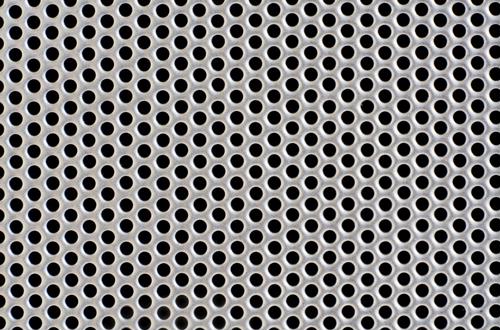4 Cool Features of Photo Chemical Etching

Small is Big
In most industries, there is a strong demand for precision metal parts. In many cases, these parts also have to be brought down to the micro level - with features that are a few thousandths of an inch. Photo etching has a number of process capabilities that make it a desirable fabrication method for these purposes.
One hole or a million- they are all free!
Filtration devices have applications in many industrial, electronic, medical, and scientific sectors, screening a wide range of solids, liquids and gases. These filters often have dozens to thousands of tiny holes in a thin sheet of metal. Photo etching is well-suited for this kind of work. We create a phototool that allows us to put all of these holes in the metal simultaneously - and you only pay for the first hole.
Conventional methods like stamping and punching can be effective for very coarse applications, however the holes will always have burrs. Additionally, these methods rely on "brute force", which often leads to mechanical distortions in the final part.
The main rules that govern holes in photo etching are that the minimum hole size must be at least 110% of the metal thickness, and that the minimum center-to-center distance between holes has to be the sum of the metal thickness and hole diameter.
They will bend but won't break...
Half-etched fold lines make it possible to transform flat parts into 3D ones. To do this, we place a line on one side of the phototool while omitting it from the other, meaning the line will only be etched on one side of the part. From there, the parts can be hand-folded into 3D shapes according to the placement of the lines. This saves time and money, since there is no need for expensive forming tool setup and cost. One common application for this technique is in the creation of RF shielding.
 Using filters with asymmetrical aspect ratios, pharmaceutical manufacturers can measure out precise doses for medication.
Using filters with asymmetrical aspect ratios, pharmaceutical manufacturers can measure out precise doses for medication.50/50 isn't the only option..
In general, we use an etch ratio of 50/50, which means that both sides of the sheet are treated equally and have the same rules in terms of possible diameters for holes and other features. But we can alter the ratio to be asymmetrical, resulting in ratios like 60/40, 70/30, 80/20 and 90/10. With these, we can make the holes one size on one side of the part and a different size on the other.
"We can alter the etch ratio to be asymmetrical."
Remember: Hole sizes have to be at least 110% of the metal thickness, even with an asymmetrical ratio. For example, for an 80/20 ratio on .010 material, the 20% side would be treated as if it were .004" thick and the 80% side as if it were .016 thick, and these would dictate the minimum hole sizes for each side. Again, parts for filtration devices make use of this feature to handle fine grain material or light.
As many parts as you can fit...not just one at a time
Composite tooling lets us make several different designs on one sheet of metal. This helps when OEMs need very small volumes of multiple parts, but don't want to pay for individual tools. We can include all of their designs on one single tool and produce them all on one sheet, saving time and money for the customer. The only rule here is that every part has to have the same thickness
For more information on the etching process, or to see how your OEM can benefit from working with a photo etching provider, call us at 800-443-5218 or email us at sales@conardcorp.com and we can get started working on your designs!
Request a Quote Today

